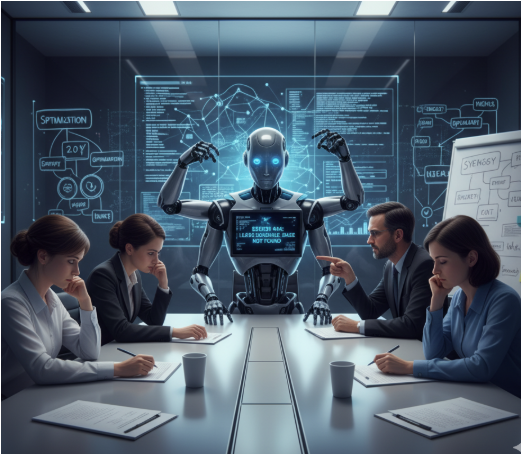AI Can't Fix Bad Leadership

The most powerful tool in the world is useless in the hands of a leader who has lost sight of the mission.
Let's get one thing straight: the AI revolution is real.
As someone who builds with these tools every single day, I can tell you that the potential is staggering. Yes, AI can be helpful. Yes, AI can be revolutionary. Yes, AI can help a good company achieve its goals with a speed and scale that was unimaginable just a few years ago.
It is a force multiplier of unprecedented power.
But an amplifier only makes louder what is already there. It will turn a clear, strategic signal into a symphony. It will also turn a chaotic, misaligned mess into deafening, expensive noise.
And there is one thing this revolutionary technology will never, ever do: it will never fix bad leadership.
We've All Seen This Movie Before
In the tech world, we live in a state of perpetual déjà vu. Every few years, a new technology emerges that promises to be the silver bullet. We saw it with Big Data. We saw it with the
Blockchain. And we are seeing it now, on a massive scale, with Generative AI.
And with every wave, a certain type of leader emerges.
This leader sees the new technology not as a tool to be thoughtfully applied, but as a mandate to be brutally enforced. They have been to the conference, they have read the airport business book, and they have returned with a new religion.
The new directive comes down from on high: "We need an AI strategy."
Suddenly, the entire company's focus shifts. The goal is no longer to solve a customer's problem; the goal is to use AI. Roadmaps are thrown into chaos. Teams are pressured to shoehorn this new, fashionable technology into features where it doesn't belong.
The engineers and product managers - the people closest to the actual work and the actual customers - raise concerns. They suggest starting with a small, high-impact pilot project.
They caution that the data isn't ready, or that the customer problem doesn't actually require a large language model to solve it.
They are ignored. The leader mistakes this thoughtful caution for resistance. They browbeat their teams, convinced that they are the visionary dragging a reluctant organization into the future. They are not listening to what needs to be done; they are dictating what must be used.
The Quiet Referendum of Top Talent
In this environment, something quiet and devastating begins to happen.
Your best people - the senior engineers, the high-performing product managers, the ones who are truly motivated by building great products and solving real problems - see the writing on the wall. They see the focus shift from the mission to the shiny object. Their work is no longer about impact; it's about compliance with a top-down tech mandate.
They don't fight. They don't argue. They just… quietly update their LinkedIn profiles.
The talent drain begins. It's a trickle at first, then a flood. These people are nearly impossible to replace, because the best prospects are experts at sniffing out a hype-driven culture during the interview process. They see an organization that is more interested in implementing what is fashionable than in serving its customers, and they run the other way.
The company is left with a hollowed-out team, a collection of half-finished AI projects that solve no real problems, and a leader who is still wondering why their silver bullet didn't work.
The Litmus Test: Good Leader vs. Hype Leader
In the age of AI, the difference between effective leadership and ineffective leadership has never been clearer.
The Hype Leader asks: "How can we use AI in our product?"
The Good Leader asks: "What is the biggest, most expensive problem our customers are facing, and could AI be a part of the solution?"
The Hype Leader says: "Everyone on the team needs to become an AI expert by Q3."
The Good Leader says: "Let's empower our existing experts with these new tools, trust them to find the highest-value applications, and give them the space to learn and experiment."
The Hype Leader measures success by the number of AI features on the roadmap.
The Good Leader measures success by the impact those features have on the customer and the bottom line.
The Tool Changes. The Mission Doesn't.
AI is a tool. It is the most powerful tool of our generation, but it is a tool nonetheless. It can build what you tell it to build. It cannot tell you what is worth building.
That is the timeless and irreplaceable role of leadership.
A great leader provides a clear vision, trusts their people to find the best way to achieve it, and remains relentlessly focused on the only thing that matters: serving the customer.
AI doesn't change these principles. It only raises the stakes. It will amplify a great strategy into market dominance. It will accelerate a bad strategy into rapid obsolescence.
It will make a good leader exceptional. It will expose a bad leader as a liability.
It will never, ever replace them.